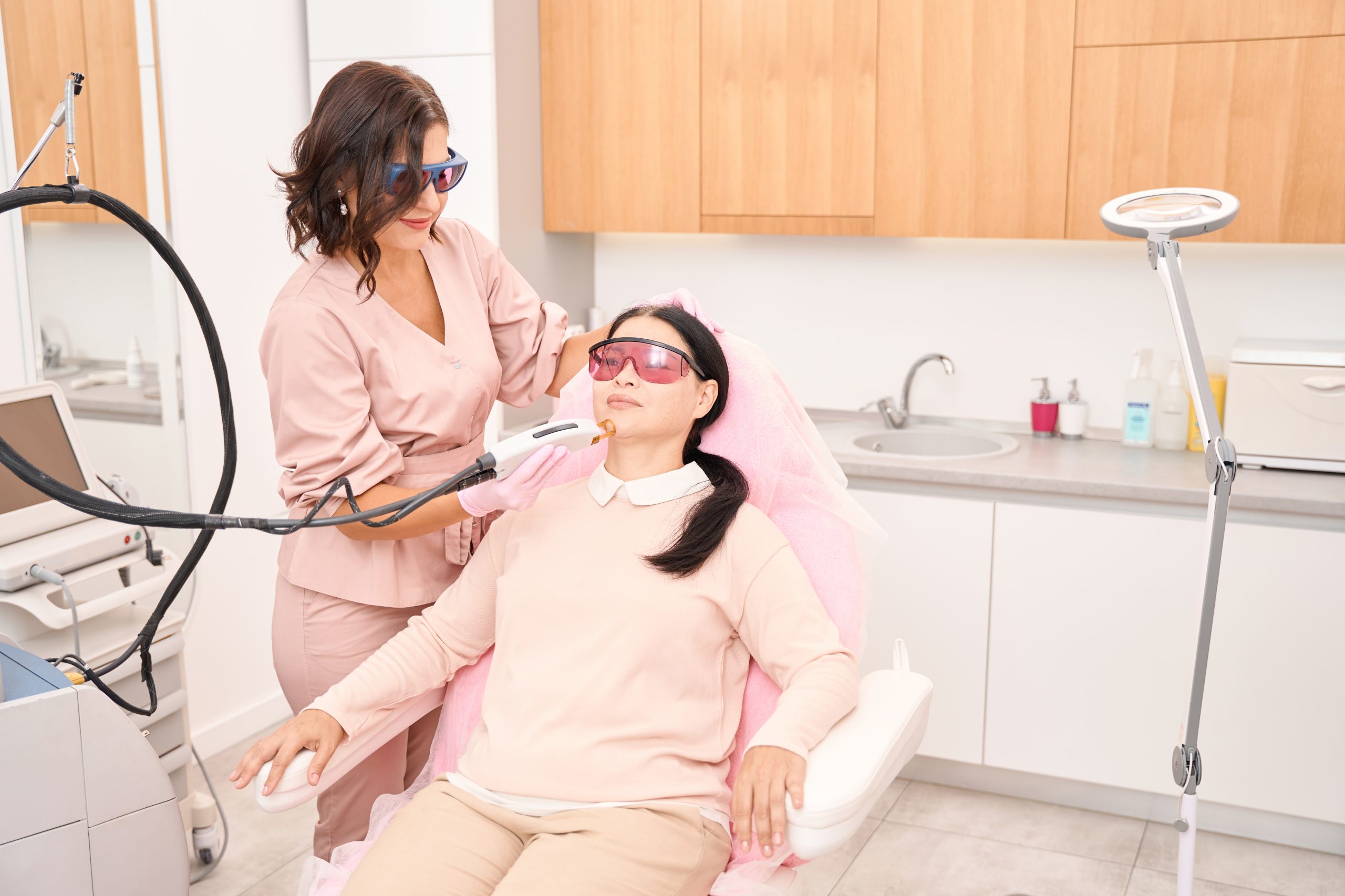Laser Hair Removal.A laser produces a beam of highly concentrated light. The light emitted is well absorbed by the pigment located in hair follicles.
Laser hair reduction is a medical procedure that uses a laser beam to destroy the hair follicles that produce hair. While this is not a permanent solution it does delay future hair growth. This treatment can be used on many parts of the body where unwanted hair appears.
As an alternative to waxing, shaving and tweezing, laser hair removal is a fairly safe and painless treatment. It also leads to almost permanent hair loss which is a boon to women. Lasers are useful for removing unwanted hair from the face and the body. Lasers can selectively target dark, coarse hairs while causing no damage to the surrounding skin.

Female undergoing laser facial hair removal procedure in a Cosmocare Clinic

Doing laser hair removal of woman armpits, client wearing safety glasses
FAQ’s
 A laser produces a beam of highly concentrated light. The light emitted is well absorbed by the pigment located in hair follicles. The laser pulses for a fraction of a second, just long enough to vaporize the pigment, disabling numerous follicles at a time to eliminate or significantly impede the hair’s growth. At our clinic we uses the highest technology lasers with unparalleled treatment efficacies in hair removal, especially thinner hairs that other lasers simply cannot target.
A laser produces a beam of highly concentrated light. The light emitted is well absorbed by the pigment located in hair follicles. The laser pulses for a fraction of a second, just long enough to vaporize the pigment, disabling numerous follicles at a time to eliminate or significantly impede the hair’s growth. At our clinic we uses the highest technology lasers with unparalleled treatment efficacies in hair removal, especially thinner hairs that other lasers simply cannot target.Moreover, normal hair goes through a growth cycle in three stages: the anagen, or growing phase; the telogen, or resting phase; and the catagen, or transitional phase. During the anagen phase, hair is susceptible to the laser’s energy, but during the telogen and catagen phases, it is resistant.
At any one time, various percentages of body hair will be in each of these phases, making complete removal unlikely without multiple sessions.
Typically five or six treatments are necessary to achieve the desired result.
